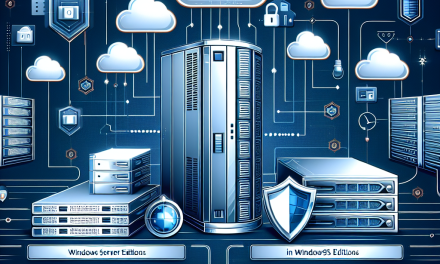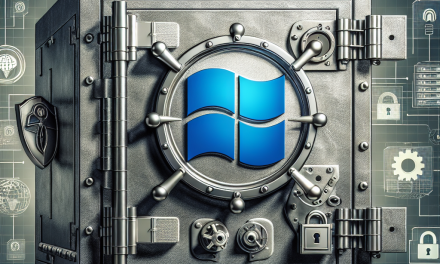In an era where data breaches and cyber threats are rampant, securing your data storage on Windows Server is more critical than ever. Businesses rely heavily on the secure management of their data to maintain customer trust, comply with regulations, and ensure operational efficiency. This article outlines best practices for securing Windows Server storage solutions, offering insights to enhance your security posture.
1. Implement Role-Based Access Control (RBAC)
Overview: Role-Based Access Control (RBAC) allows you to assign permissions based on user roles rather than individual user accounts.
Best Practice:
- Define roles clearly and assign permissions accordingly.
- Limit access to sensitive data only to users who need it for their job functions.
- Regularly review and update these roles to reflect any changes in personnel or organizational structure.
2. Use Encryption for Data at Rest and in Transit
Overview: Encryption adds a robust layer of protection for stored data and data being transmitted over networks.
Best Practice:
- Utilize BitLocker Drive Encryption to protect data at rest on Windows Server. This helps prevent unauthorized access to volumes.
- Implement Transport Layer Security (TLS) for encrypting data in transit. This ensures that data being exchanged between servers and clients remains secure.
3. Regularly Update and Patch Windows Server
Overview: Keeping your Windows Server up-to-date is crucial for protecting against vulnerabilities.
Best Practice:
- Enable automatic updates and regularly check for patches. Microsoft releases patches frequently to address security flaws.
- Establish a maintenance schedule for testing and applying updates to ensure uninterrupted service.
4. Configure Proper Firewall Rules
Overview: A well-configured firewall can prevent unauthorized access to your Windows Server storage solutions.
Best Practice:
- Use Windows Firewall or implement a hardware firewall to regulate traffic to and from your server.
- Limit open ports to only those that are necessary for your storage solutions. Regularly audit firewall rules to ensure they adhere to security policies.
5. Employ Antivirus and Anti-Malware Solutions
Overview: Malware can compromise server security and data integrity.
Best Practice:
- Use reputable antivirus and anti-malware solutions specifically designed for Windows Server.
- Schedule regular scans and enable real-time protection features to detect and prevent malicious activities.
6. Enable Auditing and Monitoring
Overview: Tracking access and changes to your Windows Server storage solutions is vital for early detection of potential breaches.
Best Practice:
- Enable auditing for file access and changes to log who is accessing data and any modifications.
- Use tools like Windows Event Viewer and Performance Monitor to set up alerts for unusual activities or unauthorized access attempts.
7. Back Up Your Data Regularly
Overview: Regular backups ensure data integrity and recovery in case of an incident.
Best Practice:
- Implement a robust backup strategy that includes regular backups of critical data.
- Store backups in a separate location or cloud to protect against physical damage or ransomware attacks.
8. Secure Shared Folders and Permissions
Overview: Misconfigured shared folders can lead to unauthorized data access or loss.
Best Practice:
- Use NTFS (New Technology File System) permissions to secure shared folders, setting the least privilege required for access.
- Regularly audit and review shared folder permissions to ensure compliance with security policies.
9. Conduct Regular Security Audits
Overview: Ongoing security assessments help identify potential vulnerabilities and areas for improvement.
Best Practice:
- Implement a security audit schedule to review configurations, permissions, and access logs.
- Utilize third-party security assessment tools for an objective review of your security posture.
10. Educate Employees on Security Best Practices
Overview: Human error is often the weakest link in security.
Best Practice:
- Conduct regular security training sessions for employees to educate them on the latest threats and best practices for data security.
- Encourage a culture of security awareness, promoting the reporting of suspicious activities.
Conclusion
Securing Windows Server storage solutions requires a multifaceted approach that encompasses technology, processes, and people. By adopting these best practices, organizations can significantly enhance their data security, minimize risks, and ensure compliance with industry regulations. Consistently reviewing and updating your security measures will help safeguard against evolving threats while ensuring your data remains protected.
For more insights on technology and security, stay connected with WafaTech Blogs, your trusted source for technology news and expert advice.





